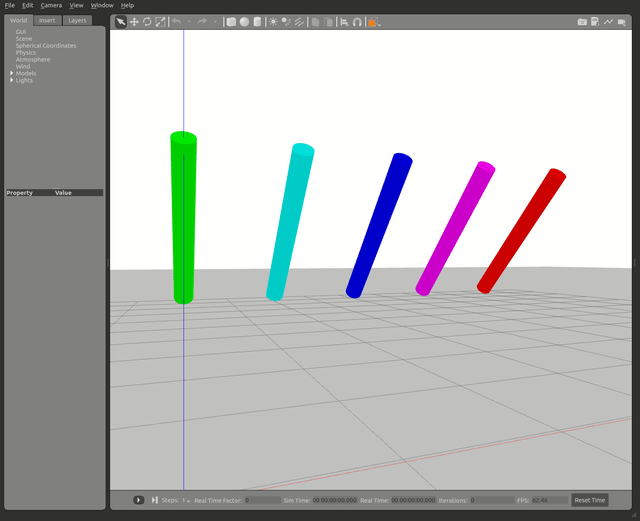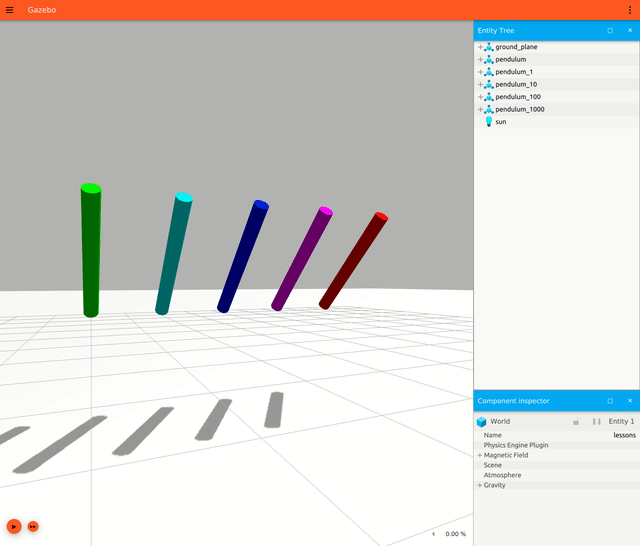Joint Damping
Joint damping reduces a force based on how fast an object is moving.
The force balance equation:
\[
F=m\ddot{x}+b\dot{x}+kx
\]
where \(F\) is an applied force, x is position, \(\dot{x}\) is velocity, and \(\ddot{x}\) is acceleration. \(m\) is mass, \(k\) is a spring constant, and \(b\) is a viscous damping term.
When you plot applied torque versus speed for the unloaded system, the damping (viscous losses) will be the slope.
Example code snippet
<!-- Damping -->
<joint name="wheel_joint" type="revolute">
<parent>wheel_support</parent>
<child>wheel</child>
<pose relative_to="wheel_support">0 0 0 0 0 0</pose>
<axis>
<xyz>0 0 1</xyz>
<dynamics>
<damping>1</damping>
<friction>0</friction>
</dynamics>
<limit>
<lower>-1e+16</lower>
<upper>1e+16</upper>
</limit>
</axis>
</joint>
Comparison


| color | damping |
|---|---|
| green | 0 |
| teal | 0.5 |
| blue | 1 |
| pink | 1.5 |
| red | 2 |